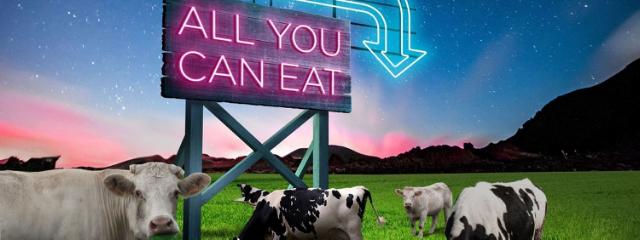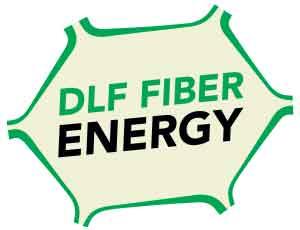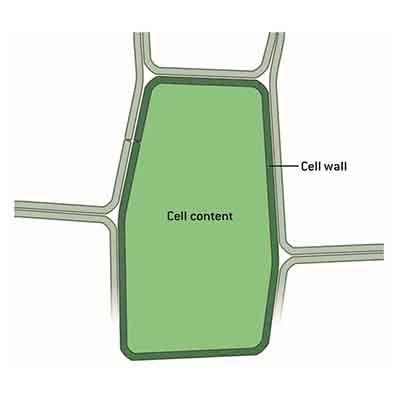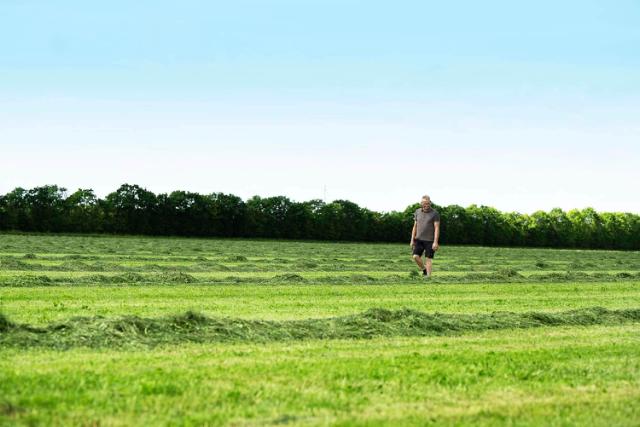
More Milk and Meat with DLF
A profitable farm business starts with more milk from dairy herds or more meat from beef herds and sheep. With DLF grass you're en route for a more profitable farm business. It is all about science, rigorous testing and optimal management. Our intensive worldwide breeding and product development programme produces improved grasses and more efficient grassland-management techniques. There is always a variety of grass from DLF, which is ideal for your soil, climate and management style.
What do you get with our More milk and meat concept?
Top varieties for a higher yield
High performing varieties give you more forage energy and protein for your livestock. If you want to optimise grassland production for greater self-sufficiency and become less reliant on bought-in feed and volatile forage price, you have advantages choosing seed from DLF.
Top quality for a higher output
Dairy and beef herds perform better when their forage is highly digestible and the protein content is high. Our top quality grasses improve nutritional intake and boost milk or meat yields. It is the surest way to maximise output without increasing input costs.
More milk or meat
Every farm is different. Finding the right grass for your soil, climate, and livestock should not be a matter of trial and error, but a choice based on certainty. In our seed catalogue, there is a grass mix that is right for you and we will be glad to help you find it.
Research improves your milk production
While you are working to achieve the best milk or meat yields through efficient farm management, we are working equally hard to develop the next generation of robust, high-yielding grass varieties.
Each year we test several thousand results of new crosses. In 2014, we streamlined the process by integrating Genome Wide Selection (GWS) into our breeding programme. GWS technology speeds up the detection of crosses with a high genetic potential for improvements in yield, quality, disease-resistance, or stress-tolerance. It helps us give you better seed, faster.
Do you already know DLF Fiber energy?
If you do, jump straight to our varieties
We test all varieties for feeding quality, and those showing high digestibility of cell walls are marked with our cell wall logo:

Higher cell wall digestibility is what we call fiber energy
Years of breeding and selection of only the best grass candidates have increased the overall digestibility of our grasses, and only the best of these grasses will be DLF fiber Energy varieties.
Through our breeding programme we developed DLF varieties with high cell wall digestibility – we call them DLF Fiber Energy varieties. These perfected DLF varieties give you more forage energy per ha and a higher milk yield or/meat production from your livestock.
Developing the perfected grass variety to increase profitability
It all starts with genomic selection. Characterizing the genetic potential of our plants by sequence analysis allows breeders to select new breeding material based on genetic merits. In this way the best offspring from a cross can be selected based on a simple DNA test instead of waiting 2-3 years for field data. In order to calculate the genetic potential for a certain trait, a (rather large) computer scans through the genomic profiles of several breeding lines to identify patterns that are associated with high yield. Once the genomic patterns for high- and low values for different traits has been identified, the potential (breeding value) of any new line can be calculated based on its genomic profile. This method also allows for selecting several traits at the same time and thereby shortening the breeding cycle by several years.
There is always a variety of grass from DLF, which is ideal for your soil, climate and your kind of management. Our top quality grasses labeled as DLF Fiber Energy improve nutritional intake. The result is more milk and/or meat yields and at the same time a reduced climatic impact due to reduced methane emissions per unite milk or meat produced.
If you want to enhance grassland productivity for greater self-sufficiency and become less reliant on bought-in feed and volatile forage price, you have advantages choosing Fiber Energy varieties from DLF. The digestibility of the cell wall, which consist of cellulose and hemicellulose, depends, among other factors, on weather and management, but we have also seen a difference between grass varieties, when they are compared under same growing conditions.
What is DLF Fiber Energy
In order to achieve high feed intake, digestibility of organic matter should be app. 78 and 81% or higher, and if we want understand what affects digestibility of grass, we need to have a look at the grass cell to investigate what constituents cell are constructed of.
A plant cell is divided into cell content and cell wall.
The content of the cell consists mainly of protein, crude fat, starch and sugars, all of which have a constant and highly digestible. Digestibility of these constituents is nearly 100% and for that reason very difficult to improve. It is somewhat different if we look at the cell wall. The cell wall is mainly constructed of lignin, cellulose and hemicellulose. The cell wall consists also of β-glucanes and pectines, but these are also highly digestible and for that reason also very difficult to improve. Lignin is indigestible and impossible to improve.
This leaves us with a limited possibility of improving digestibility, namely to improve digestibility of cellulose and hemicellulose, as these components varies in digestibility. For that reason, cellulose and hemicellulose determine the digestibility of grasses.
Hemicellulose and cellulose together with lignin is what we often refer to as neutral detergent fiber and the fraction of neutral detergent fiber, which can be digested is dNDF or what we call FIBER ENERGY. Fiber Energy can be determined by lab analysis, hence we need to screen all our grasses and the grasses with highest digestibility are nominated with a FIBER ENERGY logo.


High digestibility = higher feed intake
High digestible grass provides high feed intake and high feed intake leads to more milk or meat.
Livestock Consultant Niels Martin Nielsen, Agro Limfjord in Denmark, has calculated what it means for milk yield and the balance per cow when feeding grass with respectively 72 and 80% digestibility of organic matter.
The impact of high digestible forage, expressed in margin per cow per day, is 4.81€ compared to 5.23€ with a digestibility of 72% and 80% respectively. The milk price used is €0.25 per kg ECM and the production price of grass and maize is resp. €0.20 and €0.17 per kg DM.
By increasing the digestibility in grass with 8%-points, the milk yield is increased with 0.8 kg ECM per cow per day.
Conclusion: Replacing silage with silage having 8 %-points higher digestibility increases milk yield with 0.8 kg and farmer’s income with €0.4 per cow per day.
DLF varieties with high digestible cell walls is a good starting point for improving you margin, so look for the Fiber Energy grasses from DLF
Feed intake per cow per day |
||
| Digestibility (organic matter) in grass silage | ||
| 72% | 80% | |
| Feeding level, kg drymatter | 20.9 | 21.5 |
| Grass silage, kg drymatter | 6.0 | 7.3 |
| Maize silage, kg drymatter | 6.3 | 6.3 |
| Concentrate, kg drymatter | 13.5 | 11.5 |
| Feeding costs, total € | 5.19 | 4.97 |
| Expected milk yield, kg Energy Corrected Milk (ECM) | 39.2 | 40.0 |
| Margin, € | 4.81 | 5.23 |
Fiber Energy Varieties
Find the perfect forage mixture
High milk or meat yields are essential for running a profitable farm.
The key to this is to keep your herds well fed with home-grown forage.
With best in class ForageMax mixtures you increase the
nutritional value of your forage and silage.
